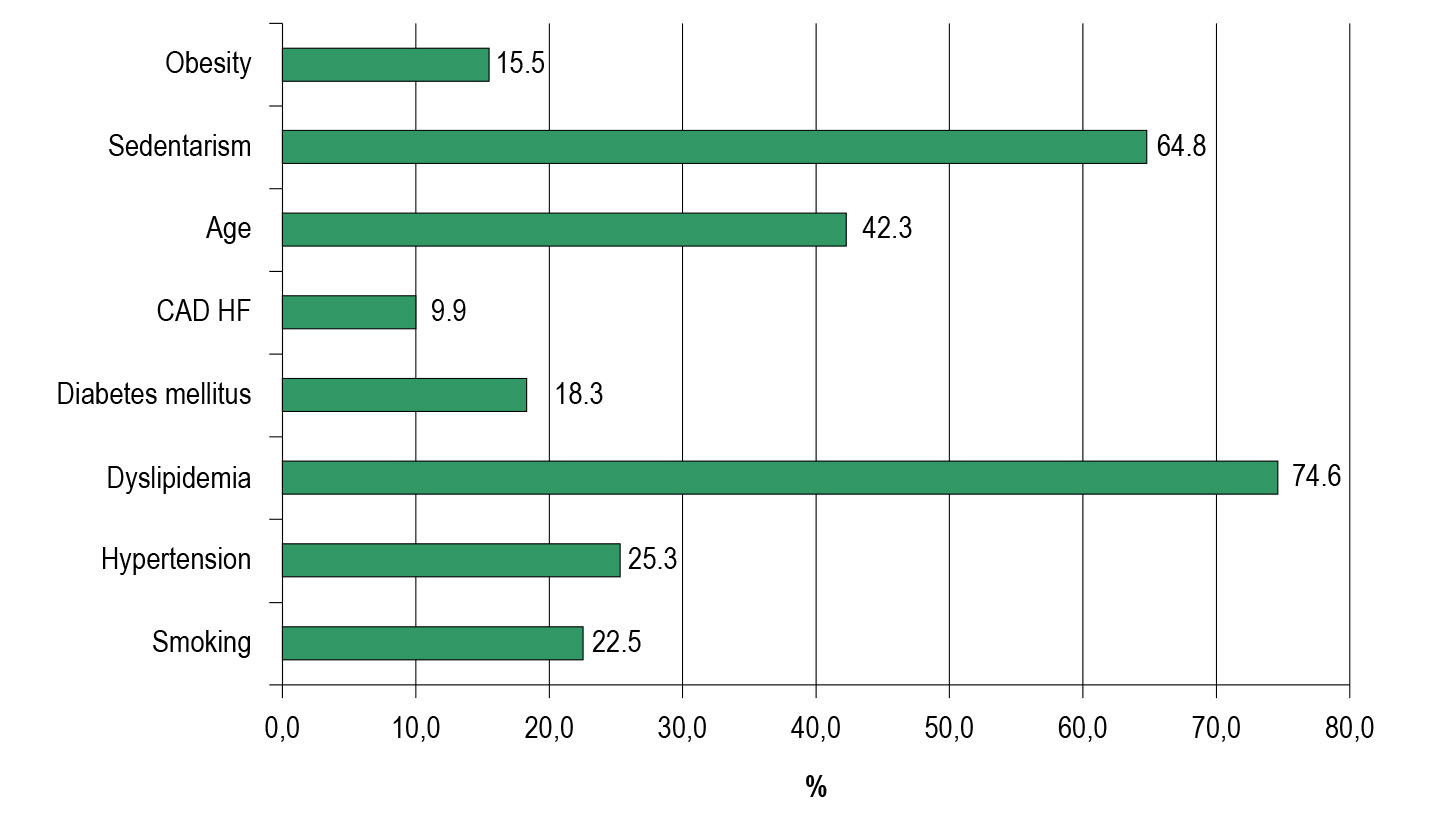Volume 114, Nº 1, January 2020
DOI: http://www.dx.doi.org/10.5935/abc.20190227
ORIGINAL ARTICLE
Subclinical Carotid Atherosclerosis and Reduced DAD Score for Cardiovascular Risk Stratification in HIV-Positive Patients
Achilles Gustavo Silva
Rafael Vieira Paulo
Mario León Silva-Vergara

Figure 1 – Cardiovascular risk factors in 71 HIV-positive patients.
Abstract
Background: HIV-positive patients are twice as likely than the general population to have a heart attack and are four times at greater risk of sudden death. In addition to the increased risk, these individuals present with cardiovascular events on average approximately 10 years earlier than the general population.
Objective: To compare Framingham and reduced DAD (Data Collection on Adverse Effects of Anti-HIV Drugs Cohort) scores for cardiovascular risk assessment in HIV-positive patients and potential impact on clinical decision after evaluation of subclinical carotid atherosclerosis.
Methods: Seventy-one HIV-positive patients with no history of cardiovascular disease were clinically evaluated, stratified by the Framingham 2008 and reduced DAD scores and submitted to subclinical carotid atherosclerosis evaluation. Agreement between scores was assessed by Kappa index and p < 0.05 was considered statistically significant.
Results: mean age was 47.2 and 53.5% among males. The rate of subclinical atherosclerosis was 39.4%. Agreement between scores was 49% with Kappa of 0.735 in high-risk patients. There was no significant difference between scores by ROC curve discrimination analysis. Among patients with intermediate risk and Framingham and reduced DAD scores, 62.5% and 30.8% had carotid atherosclerosis, respectively.
Conclusion: The present study showed a correlation between the scores and medium-intimal thickening, besides a high correlation between patients classified as high risk by the Framingham 2008 and reduced DAD scores. The high prevalence of carotid atherosclerosis in intermediate risk patients suggests that most of them could be reclassified as high risk. (Arq Bras Cardiol. 2020; 114(1):68-75)
Keywords: Carotid Artery Diseases; HIV; Acquired Immunodeficiency Syndrome/complications; Indicators of Morbidity; Antiretroviral Therapy, Highly Active; Risk Factors.















